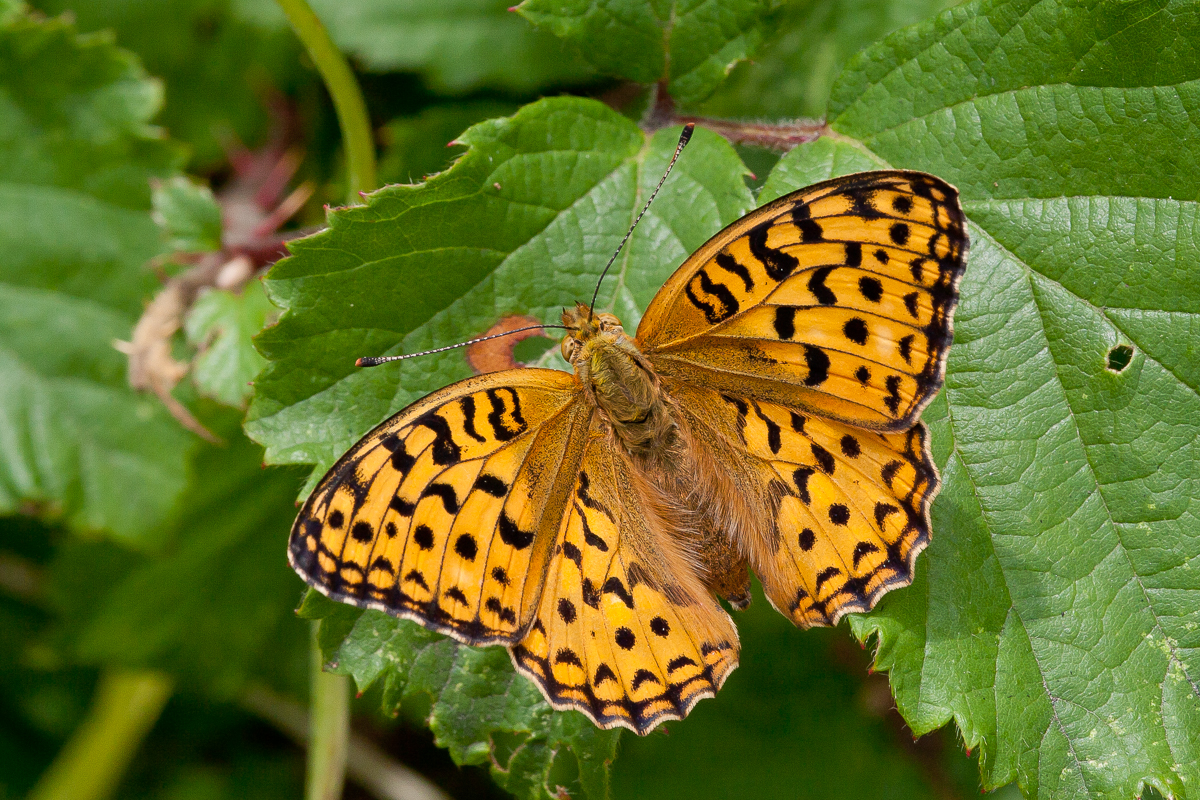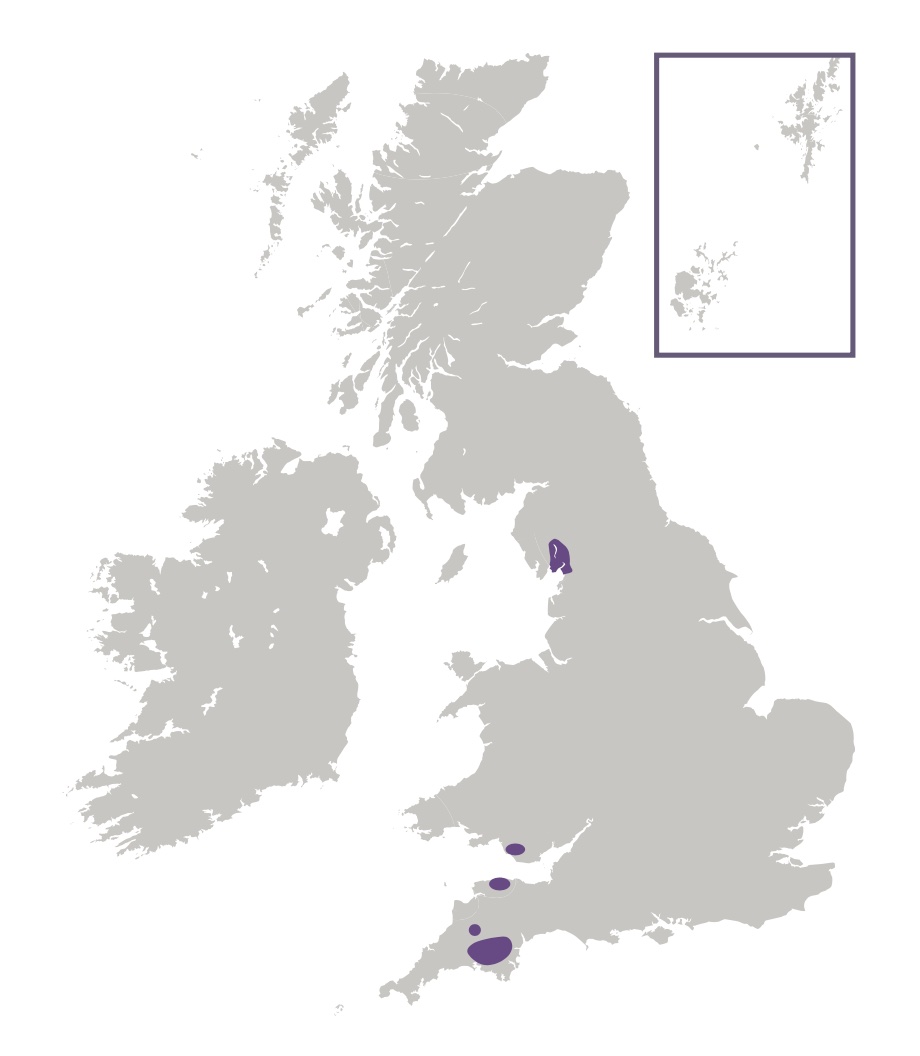
Photo © Peter Eeles
The High Brown Fritillary is a butterfly over which there is much concern due to a decline of over 90% since the 1970s. One cause of decline is believed to be the cessation of woodland coppicing, a practice which opens up new areas of suitable habitat that the butterfly is able to colonise once existing sites have become overgrown.
This butterfly is easily mistaken for a Dark Green Fritillary and the two often fly together, making a positive identification almost impossible unless the butterfly is at rest. The two species are most easily distinguished by their undersides, where the High Brown Fritillary has a row of brown spots between the outer margin and the silver spangles, which are missing in the Dark Green Fritillary. A less-reliable identification guide is that, as its name suggests, the High Brown Fritillary has a predominately brown hue to the underside, whereas the Dark Green Fritillary is predominately green. Once common and widespread in large woodlands in southern, central and north-west England and parts of Wales, this butterfly is now confined to sites in the Morecambe Bay area of north-west England, North Devon and South Devon (including Dartmoor), Exmoor in South Somerset, and a few sites in Wales.
Both sexes fly powerfully and can be difficult to observe unless nectaring on Bramble or Thistle, or when resting low down on vegetation. Males will patrol wide areas of habitat when looking for a mate, and will investigate any brown object that might be a virgin female. Pairing typically takes place in late morning. Both sexes roost high in trees at night and in dull weather.
Females are often most-easily seen when egg-laying, when they flutter low over the ground in search of the larval foodplant. Sunny and sheltered sites are preferred and the female can be seen crawling in the dappled sunlight beneath vegetation close to the larval foodplant, before laying a single egg on a dead leaf, dead bracken frond or twig. Several eggs may be laid in the same area.

This butterfly can be found in suitably-managed woodland, although they soon disappear should the site become too overgrown, with no suitably-warm undergrowth remaining for egg-laying and larval development. The butterfly is also found on rough grassland, including grassland found on the edges of woods where there is sufficient light to promote growth of the violets. This species can also be found on limestone pavement, such as the colonies around Morecambe Bay, where violets grow between the cracks.
Adults feed primarily on brambles (Rubus spp.) and thistles (Carduus spp. and Cirsium spp.). Betony (Betonica officinalis), knapweeds (Centaurea spp.), ragworts (Jacobaea spp.) and Wild Thyme (Thymus drucei) are also used.
The primary larval foodplants are Common Dog-violet (Viola riviniana) and Hairy Violet (Viola hirta). Heath Dog-violet (Viola canina) and Pale Dog-violet (Viola lactea) are also used.
